
The second day started early at about 6:00, and it was still wet, but the sky had cleared. Up and at 'em, Monty began to explore the site, sniffing furiously and wagging his tail. I started a fire with some birch and then hung up the 2 wool blankets and my wool pants that had gotten soaked in the rain the night before. I made clothes pegs out of dried pine sticks, half-split down the middle with my Mora knife.

The fire was perfect - I boiled the kettle and made coffee and a hot breakfast of oatmeal and dried fruit. Prior to eating my breakfast I ate 3 Beano tablets.
"Beano is a natural food enzyme dietary supplement that can help prevent gas before it starts. It helps you to digest the complex carbohydrates in your favorite healthy foods. By taking Beano at the beginning of a meal, you can help prevent gas, bloating and other discomfort."

That's because the last time I ate oatmeal, dried fruit, freeze-dried food etc... for several days straight while camping, I developed horrible stomach cramping, Hindenburg-esque gas, and disturbing pains in my middle area of my body. Beano works.

After a while my wood ran out, so I went for a walk in the woods. Monty followed close behind. From a distance I saw a dead-standing birch tree. Shortly after this sighting, I had slain the beast: chopped it down with my Gransfors-Bruks Small Forest Axe, cut it up and dragged it back to the site. Chipmunks and small toads and witches butter (Tremella mesenterica) fungus filled the woods around.

While out on my walks I snacked on Wintergreen berries, Partridge berries, Blackberries, Yellow Wood Sorrel (Oxalis), and at one point - some Rock Tripe fungus. The blueberry bushes around the site were bare at this point in the season.

Flocks of Canada Geese flew overhead, 50 and more, honking high in the sky - all headed south. The 2 (really) mosquitos I saw the whole week flew past me on the evening of the second day. They looked a bit bewildered. They too were headed south.

It was quiet up there. Other than the sound of the wind, and the occasional flight of geese, I heard Blue Jays cajoling, shrieking back and forth (I saw a family of 15 flocking around some maples in the distance).

Nuthatches flitted about the Pines, the Balsams, and the Birches - chattering quietly amongst themselves. Loons swam up and down the lake during the week and sang in the evenings.

The second day ended well - the weather was clearing, the air was warm, Monty was good and tired out from running about the woods, and I had my book to read by candlelight.

Cheers,
Mungo




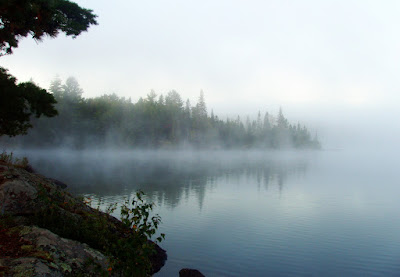

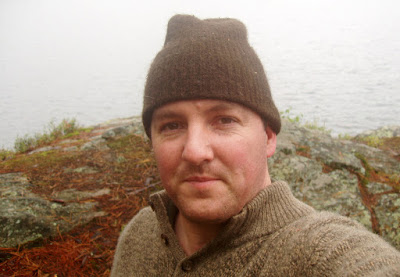
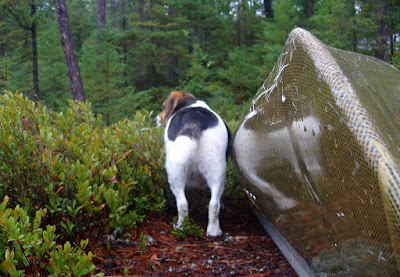








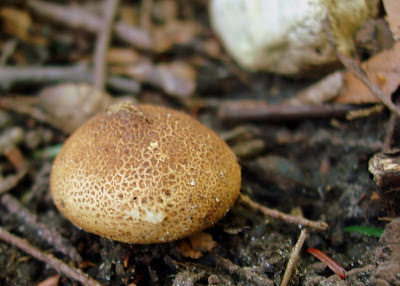



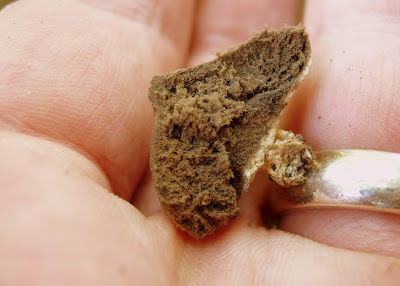

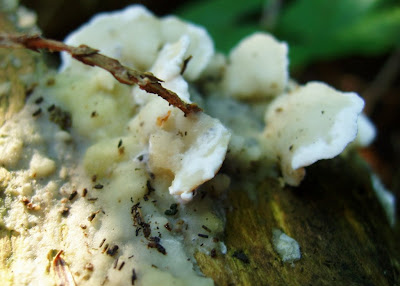
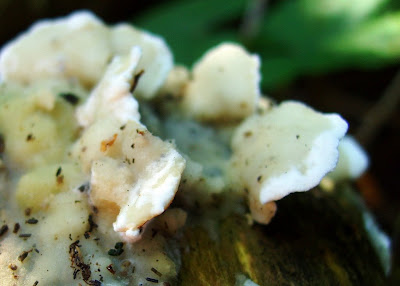













.JPG)

